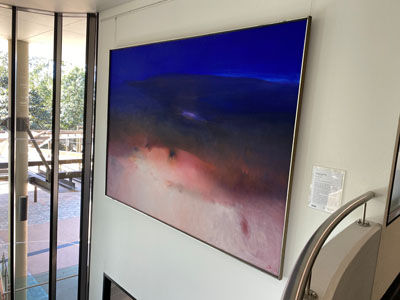
The Ocean
Donald Laycock
Wall art
Purchased in 1994
Griffith University Art Collection
Donald Laycock is a major art historical figure in 20th century Australian modernism. A member of the 1950s ‘Group of Four’ alongside artists Lawrence Daws, John Howley and Clifton Pugh, Laycock was embraced by Melbourne’s arts establishment early in his career as an artist of promise. Celebrated for distilling Abstract Expressionism into the Australian context during the 1960s, his later colour field paintings of the 1970s are considered on par with those of the leading contemporary American colour painters.
Laycock created several large-scale murals throughout his career, including a monumental work for the Australian Pavilion at the 1967 World Expo in Montreal. This seascape by Donald Laycock is placed strategically between the nineteenth century pictorial concept of the sublime (artists such as Constable and Turner) and the mid twentieth century modernism of colour field strategies.
The overpowering ocean and the romantic beauty of the dawn elevate the viewer to a contemplative mood. However, it is interesting to note that Laycock achieves this without recourse to realism or perspective (which the nineteenth century painters would certainly have used) and in this respect his techniques are certainly modernist. Indeed, this painting reveals links between the nineteenth and twentieth century strategies of ‘immersion’, either in ‘landscape’ or the extended visual ‘field’ of the abstractionists. The large scale gives a sense of elevation and grandeur, rooted in an experience of nature as a wild-primitive other, a key element in the aesthetic of the sublime while the managed colour range is a visual focus in itself.